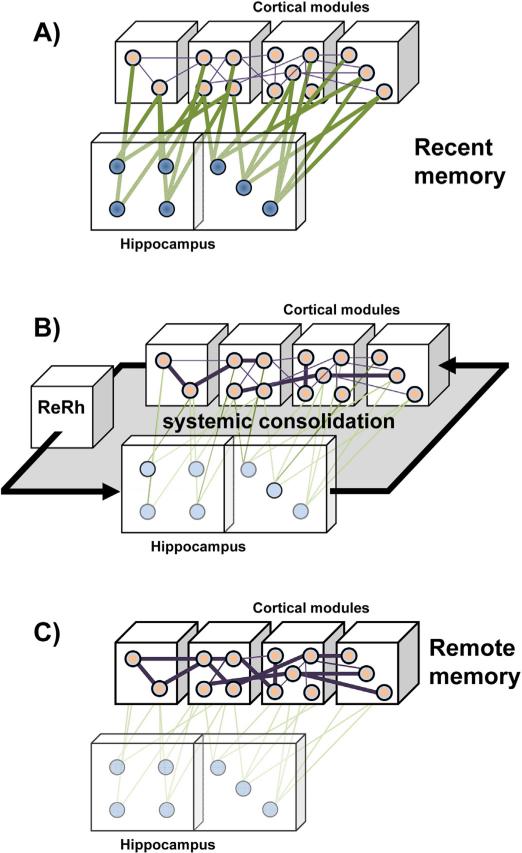Fig. 7.
A role for the reuniens nucleus and the rhomboid nucleus in systems-level consolidation of a memory. (A) During encoding, the different perceptual features of an experience are processed in primary and associative areas of the cortex, from where a representation is integrated in the hippocampus as a recent memory trace. (B) Over time, off line reactivation – probably during particular stages of sleep – of hippocampo-cortical networks progressively leads to a strengthening of existing connections within and between cortical modules as well as to the establishment of new connections therein. This process probably requires bidirectional information flow between the mPFC and the hippocampus, wherein the Re and Rh nuclei might play the role of a hub relaying at least the information transmission from the prefrontal cortex to the hippocampus. (C) These strengthened connections in the cortex provide, in whole or in part, cortical support to remote memories, which therefore may become, though not necessarily completely as shown by e.g., Lopez et al. (2012), independent of the hippocampus. This figure has been drawn after Frankland and Bontempi (2005).

